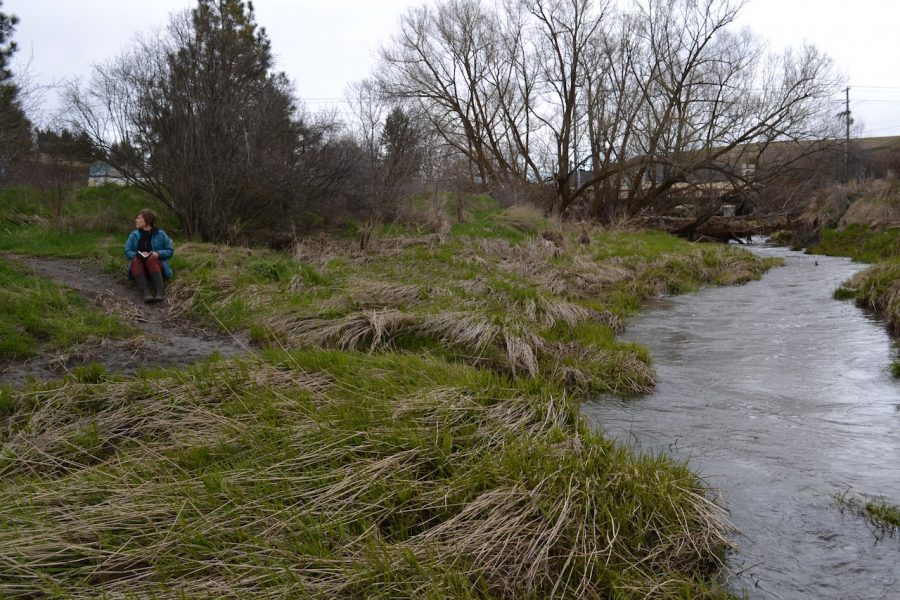English professor draws inspiration from natural world, water for poetry
Linda Russo discovered poetry in her mid 20s; now teaches, writes ecopoetics
“Wherever I am, wherever I go, I gravitate toward the water,” said Linda Russo, clinical associate professor in the WSU Department of English. “I like going to islands because you can have a real sense of where you are.”
September 17, 2020
When she is preparing to write a poem, Linda Russo often starts with a question. She records observations about the outdoor environment in her spiral-bound notebook and collects samples from the natural world. In that way, her writing is a lot like fieldwork, she said.
Russo, clinical associate professor in the WSU Department of English, is a poet with a penchant for the outdoors. Her writing is inspired by the concept of place, often featuring environments with water, she said.
“Wherever I am, wherever I go, I gravitate toward the water,” Russo said. “I like going to islands because you can have a real sense of where you are.”
Russo’s main genre of writing is called ecopoetics, which involves making poetry in the midst of ecological connections, she said. Since Russo feels especially connected to water, she began a water-related poetry project before the pandemic called “creekopoetics,” where she draws inspiration from creeks near her Pullman residence.
Creeks are sites where many living and nonliving things come together, Russo said. Humans can learn from the non-human entities there and experience a sense of kinship instead of thinking of non-humans as an “it.” This idea comes from a quote from Robin Wall Kimmerer, a member of the Citizen Potawatomi Nation and an environmental and forest biology professor at the State University of New York.
Even though writing was always a vital activity for her, poetry was not something Russo encountered as a writing option until her early 20s, she said. Bill Knott, an American poet, was one of Russo’s teachers who inspired her to pursue poetry.
“Poetry could open up my imagination,” Russo said. “It was a way to tune my creative intelligence.”
Poetry combines a creative element with a more abstract, philosophical element, Russo said. She enjoys being able to have her hand on what she is writing about, such as a creek or the silt of a creekbed, while entertaining philosophical thoughts about her subjects.
“[Russo’s] writing often makes me appreciate the small things, the small details,” said Dennis DeHart, associate professor of photography in the WSU Department of Fine Arts. “It makes me have a reverence for nature.”
Russo is the director of EcoArts on the Palouse, an organization that explores the wild edge spaces of the Palouse region through different art mediums.
The agricultural landscape in the Palouse contains little biodiversity, Russo said. However, the edge spaces, which contain trees, plants and animals, are very biodiverse and ecologically different from the rest of the landscape.
DeHart, who is a contributor to EcoArts, said Russo is committed to the environment and obtaining a broader understanding of it.
“[I thought], ‘Why don’t we have a little beauty in our lives and invite artists to create artwork connected to those wild edge spaces?’” Russo said. “It becomes another lens into understanding what’s there.”
Russo is currently working on a project where she collects silt from local creek beds and sends them to another artist who makes them into pigments and paints with them.
“It has to do with making, knowledge, imagination, intelligence,” Russo said. “But also making art with and in connection to this the creek, not just as an isolated entity, but as a site of aliveness.”























